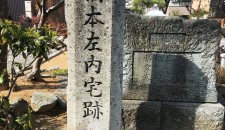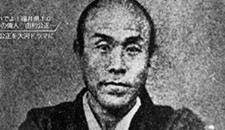Meiji Restoration
The Meiji Restoration was the historic change from the feudal system of the Edo Shogunate to the system of direct Imperial rule by the Meiji government through the overthrow of the Shugunate, and the accompanying series of wars and reforms.
[Events]
Perry’s fleet arrival (1853) The beginning of the end of Edo Period
The Restoration of Imperial Rule(1867) - The 15th Shogun of the Edo bakufu, Yoshinobu Tokugawa reported to the Emperor Meiji that he would return the sovereignty to the Emperor.
The Boshin War(1868-1869) - The civil war between the Meiji new government and the old shogunate forces.
The Charter Oath of Five Articles(1868) - The basic policy of the Meiji government
Abolition of feudal domains and establishment of prefectures(1871) - An administrative reform which the local system was unified into under the control of the central government.
Seinan War (1877) - An armed uprising of warrior class led by Takamori Saigo.
[People]
Kaishu Katsu - Contributed to the immediate ceasefire of the Boshin War and the bloodless surrender of Edo Castle.
Takamori Saigo - Led the imperial army in the Boshin War. He negotiated with Kaishu Katsu and realized the bloodless surrender of Edo Castle.
Ryoma Sakamoto - Committed to Satsuma-Choshu Alliance and The Restoration of Imperial Rule.
Sanai Hashimoto - Appealed for reform of the shogunate and he was excuted in the Ansei Purge. He was 26 years old. A feudal retainer of the Fukui clan.
Kimimasa Yuri - Wrote “Gijinoteitaii” which was the original draft of the Charter Oath of Five Articles. A feudal retainer of the Fukui clan.





